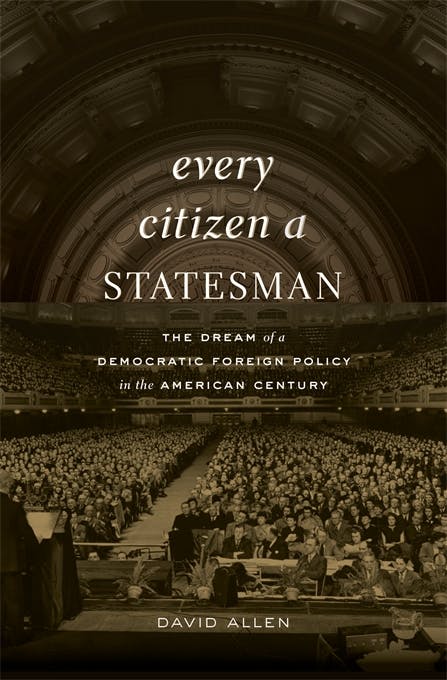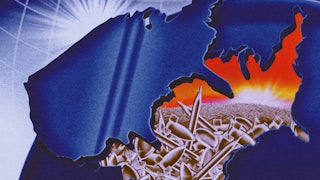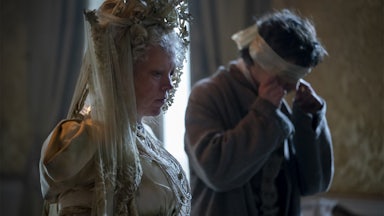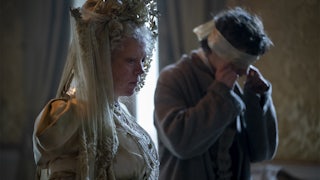In the tense summer of 1953, as the Korean War wound down, Nikita Khrushchev seized power in the Soviet Union, and the Soviets tested their first hydrogen bomb, a young activist named Roger Mastrude traveled up and down the West Coast of the United States trying to get people interested in foreign policy. Mastrude was the regional agent of the Foreign Policy Association, a nonprofit dedicated to democratizing U.S. foreign policy. And that summer, like some strange twist on a character out of Kerouac, he drove 25,000 miles in his family car, towing a trailer full of informational pamphlets and film reels, to educate the public about foreign affairs.
The clutch on Mastrude’s car eventually gave out in protest. By September, he was tired, writing that he got “a little glum now and then” at the difficulty of ginning up grassroots enthusiasm for foreign relations. But he didn’t give up. Just over a year later, he launched a discussion series called Great Decisions in Portland, Oregon, designed to get everyday citizens talking to each other about topics like “How shall we deal with the USSR?” and “Is there an American way in foreign policy?” By 1959, Great Decisions had spread to some 500 communities in 43 states, reaching 80,000 people and circulating in 199 newspapers and 120 radio and television stations. In 1964, 250,000 people participated. The program continues to this day—if you want to launch a local discussion group about issues like “Energy Geopolitics” and “China and the U.S.,” you can now order the Great Decisions 2023 Briefing Book and DVD.

The Great Decisions program in the 1950s and ’60s was perhaps the peak of the Foreign Policy Association’s prestige. At the time, the group was backed by U.S. presidents and secretaries of state and funded by the largest philanthropies in America. These days, its influence has been eclipsed by that of its rival, the Council on Foreign Relations, which, as Stephen Wertheim has argued, designed the framework for American hegemony after World War II. But as David Allen shows in his illuminating new book, Every Citizen a Statesman, the Foreign Policy Association represented a powerful impulse in twentieth-century progressive politics: the desire for a democratic foreign policy. Recounting the Association’s mostly failed efforts from 1910 to 1970, Allen tells an elegiac tale of the attempt to make U.S. diplomacy more democratically accountable.
At a time when long-held foreign policy pieties on everything from free trade to military interventions have come unstuck, Allen’s book also serves as a guide—a record of efforts to democratize foreign affairs and their pitfalls.
The idea of a democratic foreign policy is an old one. Alexis de Tocqueville worried about it, writing in Democracy in America that “foreign policy requires virtually none of the distinctive virtues of democracy.” During the Civil War, in contrast, Secretary of State William Seward published diplomatic documents in order to increase transparency, reasoning that “if the Government continually depends upon the support of Congress and the People,” the people must be “thoroughly and truthfully informed.” But Allen argues persuasively that the pursuit of a democratic foreign policy really took off around World War I, as the U.S. stepped onto the world stage as a major military and economic power. Progressive era reformers came to believe that if the U.S. was going to shape global affairs, and if it was also going to remain a democracy, a way would have to be found to subject foreign policy to democratic control.
The Foreign Policy Association was central to that effort. It was formed in 1918 to encourage internationalism in the U.S., as President Woodrow Wilson tried to solidify a new global order in the League of Nations. Leading progressive reformers from the historian Charles Beard to the New Republic editor Herbert Croly, the philosopher John Dewey, the lawyer Felix Frankfurter, and the suffragist and antiwar activist Jane Addams signed the Association’s Statement of Principles. They hoped, they said, to achieve “security” and a “democratic union of peoples” through the League of Nations, remaking the world in the democratic image of “the principles that have been woven into the fabric of our national life.” And that, in turn, would require informing the public about foreign affairs. As the muckraking journalist Paul Kellogg put it, the “provincial and ignorant” must be educated toward “the international mind.”
On one hand, this was a genuinely democratizing project. Influenced by the pedagogical theories of John Dewey, who saw education and deliberation as the soul of democracy, the Association sought to cultivate widespread public knowledge of foreign affairs. But as Kellogg’s remark about the “provincial and ignorant” suggests, it was also a condescending project, aimed at bringing the knowledge possessed by foreign policy experts to elites within local communities, who would then shape their communities’ views. Allen dubs it “trickle-down diplomacy.”
The Association pursued two main educational efforts in the years before WWII. The first was a lunchtime speaker series. At luncheons at the swanky Hotel Astor in New York, attended by the city’s upper crust, experts debated topics like the Russian Revolution and Wilson’s Fourteen Points. Local branches of the Association held similar events throughout the U.S., and the Association embraced radio in the late 1920s to broadcast its debates. The group’s other main project was publishing the Foreign Policy Reports, deep-dive analyses of global issues prepared by the Association’s research department and used by newspapers across the country for their coverage of world affairs. The Reports were influential: The State Department gave free copies to journalists, and State Department experts even peer-reviewed the Reports before publication.
To a surprising extent in the male-dominated world of foreign policy, the Reports were also researched and written largely by women, many of whom were part of the boom in women’s enrollment in graduate school at the time. Indeed, the Association itself was driven substantially by women who had previously been involved in the suffrage and peace movements. They used their organizing know-how and progressive theories of social reform to bolster the Association’s institutional capacity and steer it toward a more capacious democratic vision.
At the same time, though, the Association mostly ignored issues of racial justice, in the U.S. or abroad. As Allen starkly puts it, the group treated “Black engagement with world affairs” as if “it did not exist.” W.E.B. Du Bois was occasionally invited to speak at the Association’s luncheons. Yet even then, there was a minor scandal in 1929 when he debated the ongoing U.S. occupation of Haiti at the Hotel Astor, with an accompanying radio broadcast. Du Bois spoke first, arguing that “the American occupation took away what little democracy the people [of Haiti] had,” but when his opponent took the stage, NBC connected an additional seven radio stations to the broadcast, giving the pro-occupation side a significantly larger audience. NBC insisted it was just because of a programming overlap at some stations and “no discrimination was intended,” but the story made The New York Times, and it was at least symbolic of the Association’s lack of interest in the anti-racist approach to a democratic foreign policy that Du Bois espoused.
In the middle of the twentieth century, Allen shows, the Association played a key role in generating what he calls the “foreign policy community”—the networks of experts, activists, and State Department officials that shaped foreign affairs. Secretaries of state including John Foster Dulles and Cordell Hull supported the Association’s work, as did major philanthropies such as Carnegie, Rockefeller, and Ford. Former Association officials also helped the State Department build new public affairs units during the 1940s to create educational materials and track public opinion through polls. And in the 1950s and 1960s, the Association itself branched out from its lunchtime talk model, which was pitched at urban elites, to a wider picture of who was part of the democratic public, reaching a broader audience through the Great Decisions program.
But the Vietnam War changed everything. At the Association’s fiftieth anniversary banquet in 1967, Secretary of State Dean Rusk spoke in the ballroom of the Manhattan Hilton. Outside, three thousand antiwar demonstrators clashed with the police, protesting, they said, “against the Foreign Policy Association” and “the American establishment” it represented. By the 1980s, that “establishment” had reacted to the backlash against Vietnam by constructing a more insulated, elite-driven foreign policymaking apparatus. At the same time, philanthropies cut their support for the Association, and the Association narrowed its educational mission to focus on community leaders rather than the public at large. The dream of a democratic foreign policy appeared lost.
Every Citizen a Statesman is both an inspirational story and a cautionary tale. The Association’s goal of a democratic foreign policy remains vital. But the Association’s methods—too often elitist, condescending, captured by powerful philanthropic interests, and willfully ignorant of nonwhite citizens’ views—is a roadmap for how not to democratize foreign affairs.
There were other approaches the Association could have pursued. Allen rightly criticizes the group for ignoring Black perspectives, but his book doesn’t quite convey just how deeply the Black community in fact engaged with foreign affairs. As I’ve described in these pages and elsewhere, Du Bois wrote about foreign relations for decades, linking domestic civil rights with racial justice on the global stage. Activists like A. Philip Randolph, Pauli Murray, and Martin Luther King Jr. likewise tackled foreign policy issues. And the Black press avidly covered world events—Du Bois published an issue of The Crisis about the U.S. occupation of Haiti in 1920, for example, and the Chicago Defender and Baltimore Afro-American ran dissenting views on Cold War policy and the nuclear arms race. As historians like Penny Von Eschen, Carol Anderson, Brenda Gayle Plummer, and Timothy Lovelace Jr. have shown, Black activists consistently wove together domestic and global affairs. In telling the story of the Foreign Policy Association and its times, the alternative approaches envisioned by Black activists deserve more airtime.
That is not merely an academic point. If we want to democratize foreign affairs, it’s important to transcend the narrow views of groups like the Foreign Policy Association. And today, the truisms of U.S. foreign policy are indeed up for grabs in a way they haven’t been for decades, with Democrats and Republicans alike debating their parties’ positions on issues from global trade and climate change to the war in Ukraine and the continuing rise of China. The content of U.S. foreign policy is open for revision. And as Allen insightfully reminds us, lurking behind the question of what the U.S. will do is a deeper one: Who will decide?
To give the electorate greater say, Allen suggests more public input in the policymaking process, greater humility among foreign policy experts, and alliances with grassroots social movements. Those are good ideas: Establishment experts could always afford more humility, and our foreign policy apparatus is clotted with layers of secrecy and bureaucracy, making it hard for voters to hold elected representatives accountable. Grassroots movements are clearly key—though as I’ve suggested, many of them have in fact been engaged with foreign policy issues all along.
Those movements offer wider visions for a democratic foreign policy today. For much of the twentieth century, if the Foreign Policy Association wanted to democratize foreign affairs, it should have fought Jim Crow: Voting rights for millions of African Americans would have made foreign policy radically more democratic simply by making the U.S. government a democracy for the first time. Today, similarly, efforts to re-expand voting rights and end racial and partisan gerrymandering would be a good step to democratize foreign affairs. And in the bigger picture, there is another question that activists like Du Bois and MLK emphasized but that the Foreign Policy Association never seems to have asked: Is it democratically legitimate, from a global perspective, for the U.S. to wield the outsize power it does? Global democratization on issues from climate change to economic equality to collective security is worth fighting for.
In 1953, the same year Roger Mastrude drove up and down the West Coast for the Foreign Policy Association, Langston Hughes published a short story in the Chicago Defender in which his character Simple, a stand-in for the common man, wishes to become a giant. He would have “hands so big,” Simple says, that he could “pick up Georgia in one and Mississippi in the other, and butt them together, bam! And say, ‘Now you-all get rid of all this prejudice stuff.’” Then, Simple dreams, he would “look over the edge of the world and grab England and shake her till she turns the Mau Maus free, and the other black parts of the world in her possession,” then hop “right on to Korea and settle the war there.” “Peace!” Simple concludes, “It’s truly wonderful!” Using satire to trace the links between injustices in the U.S. and abroad, Hughes offers a stinging dissent against both Jim Crow and the still-imperialist global order. Any genuine movement to democratize U.S. foreign policy should follow that simple but capacious view.






